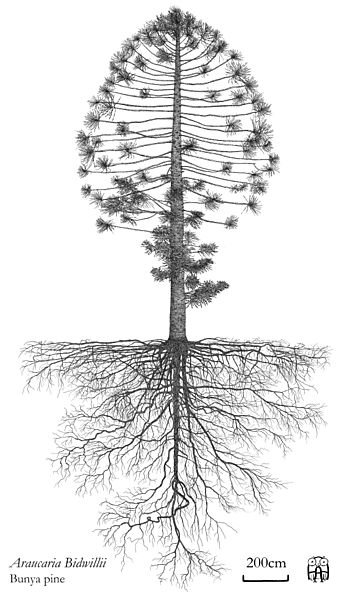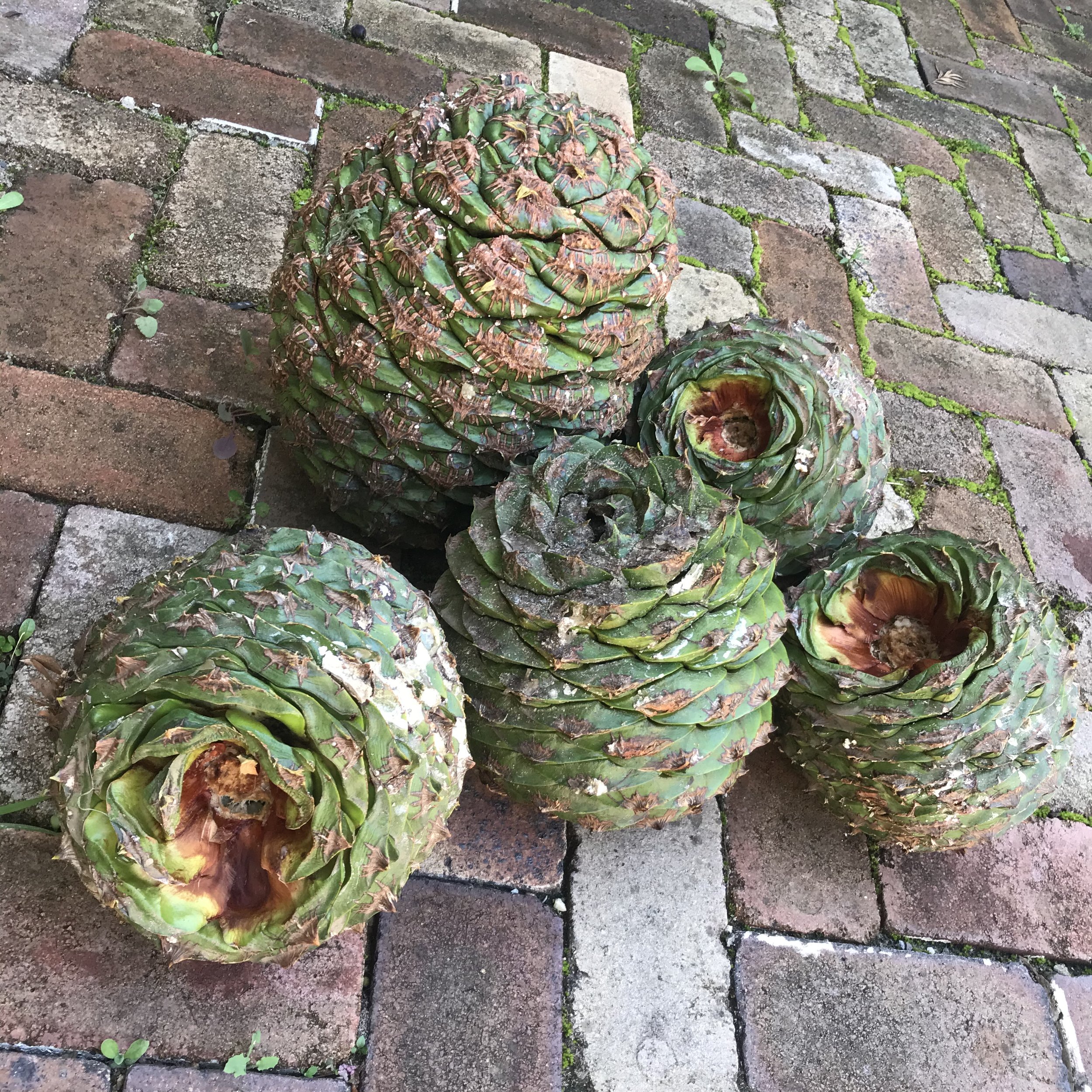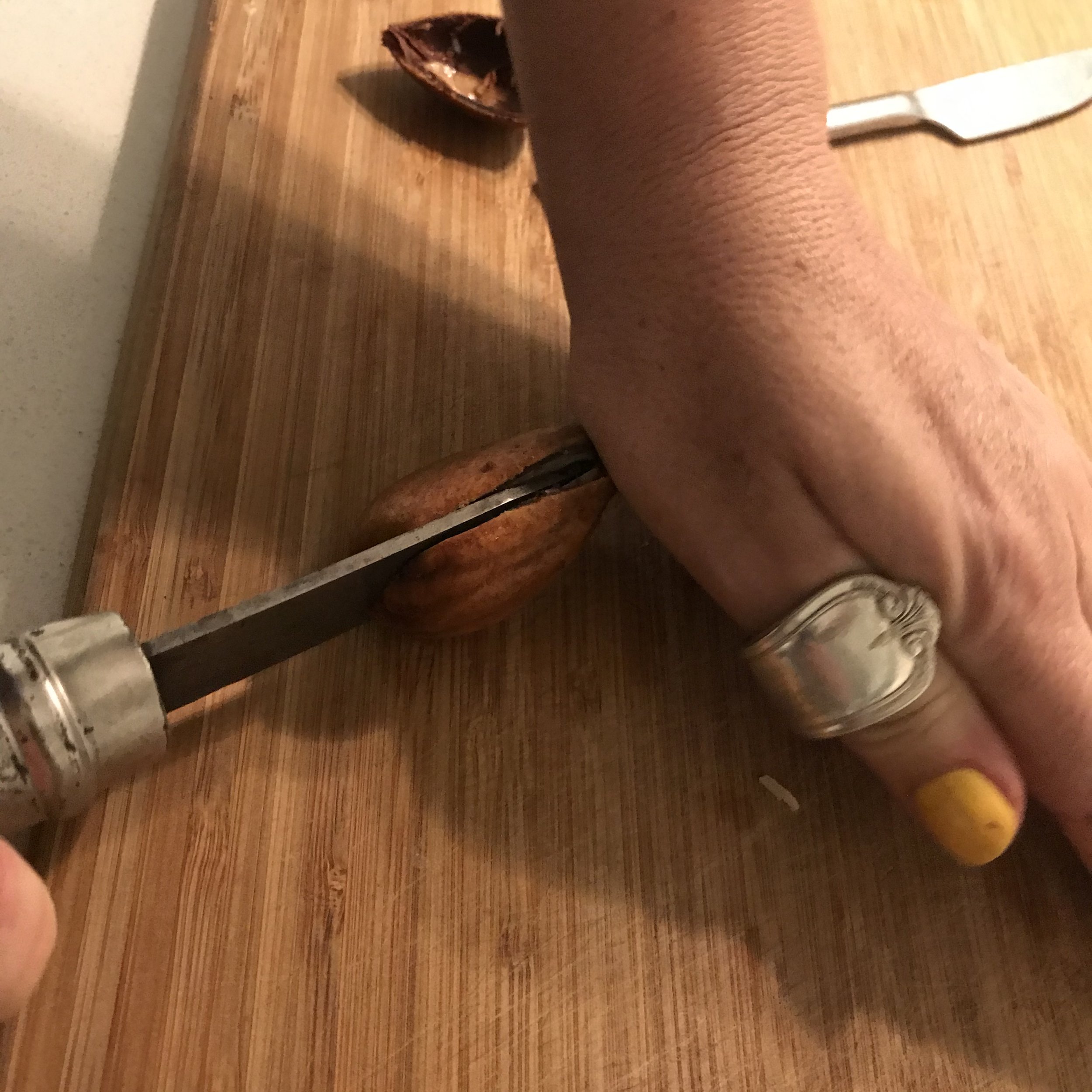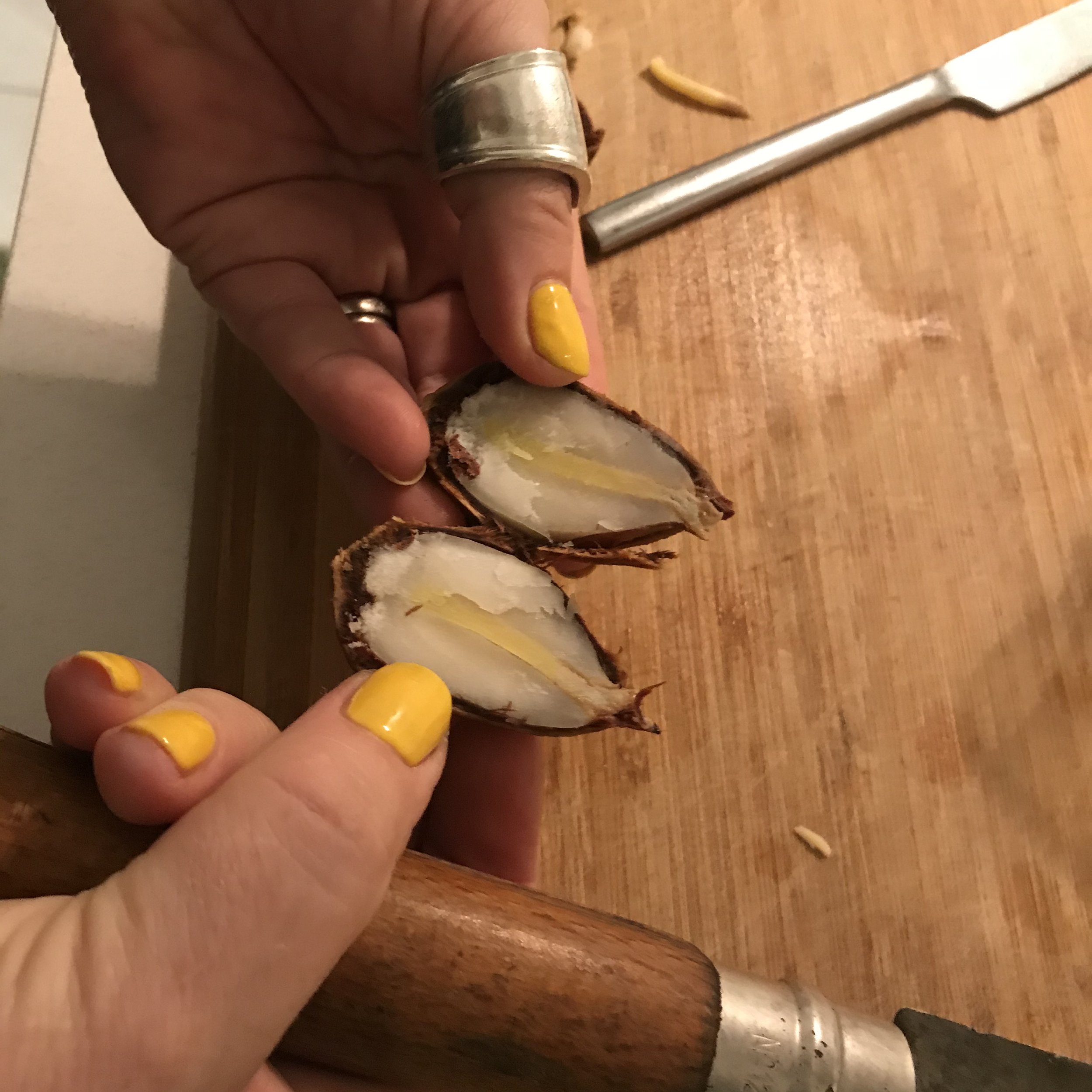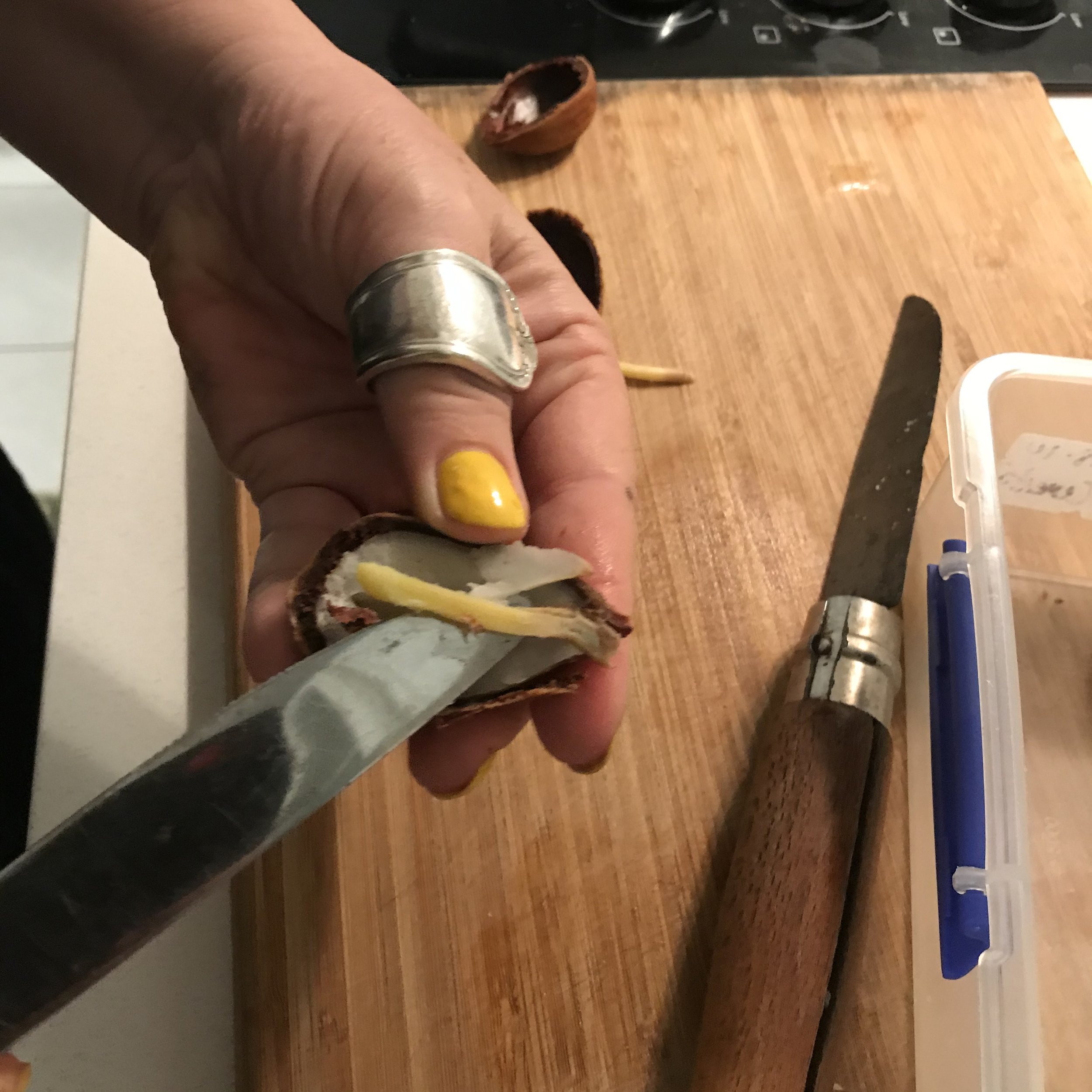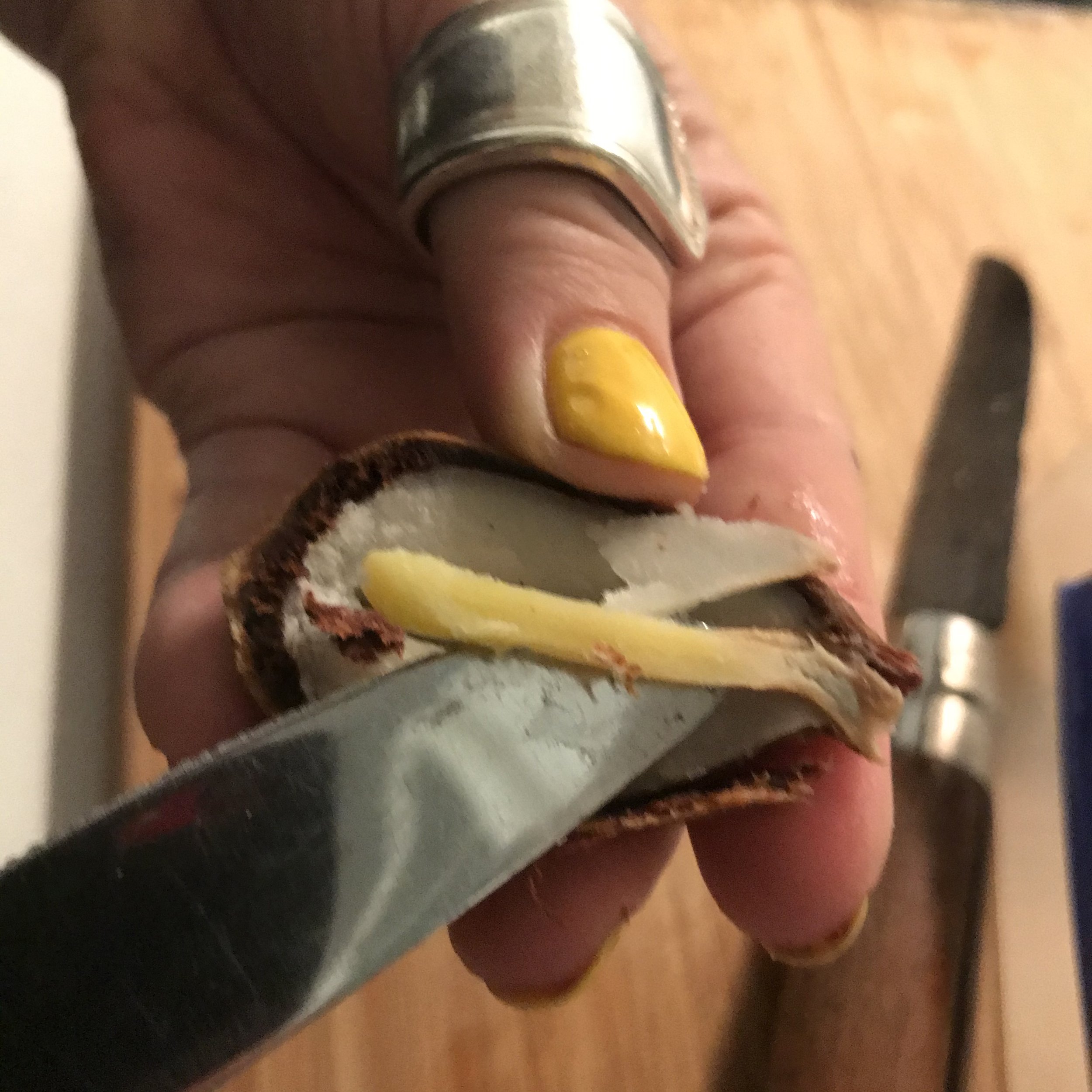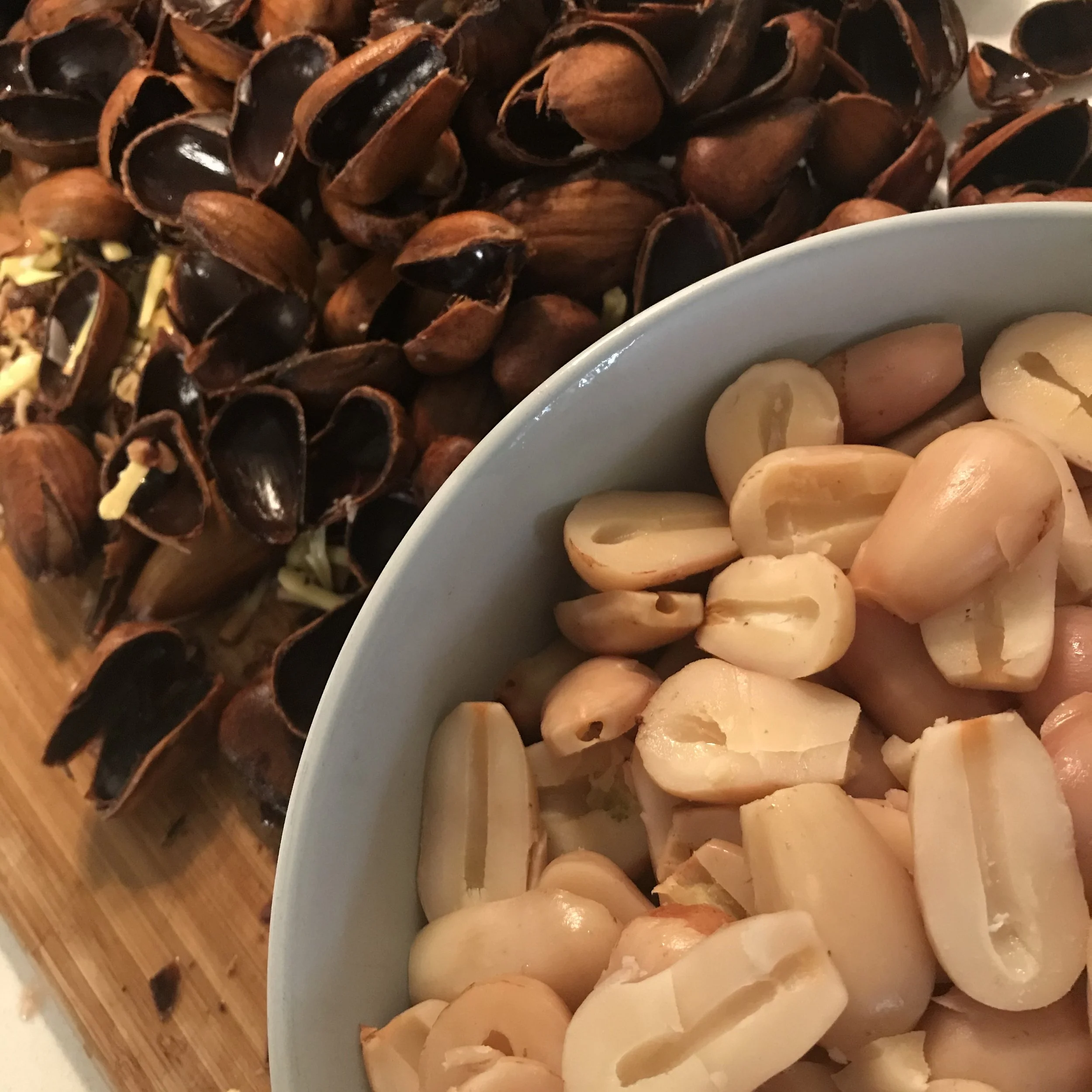Beautiful bunyas
The Bunya Bunya is a culturally important tree for First Nations Australians. It is a sacred tree and the gathering of bunya nuts was celebrated every three or so years in its natural range, around modern-day Brisbane/Sunshine Coast.
Many traditional owners of the area still have a cultural and spiritual connection with the trees, including the Wakawaka, Githabul, Kabi Kabi, Jarowair, Goreng goreng, Butchulla, Quandamooka, Barungam, Yiman, and Wulili.
The trees produce enormous cones every year, however, once every three years, there is a bumper crop and during this massive harvest, indigenous tribes from all over Queensland and NSW were invited to come together to celebrate the Bunya. Some tribes traveled for 100's of kilometres to participate in massive corroborees in South East Queensland, feasting on the nuts, sharing stories and songs, settling disagreements, and arranging marriages.
According to some reports from the late 19th century, thousands of people gathered for the feast, making it one of the most important celebrations for First Nations people on the continent.
My article below is offered in full respect of the traditional importance of this seasonal treat and for the land custodians of Queensland and NSW.
Please see this recollection of first-hand accounts about the Bunya Festivals at the turn of last century and here for two great little videos, on Gardening Australia and ABC, about the current indigenous-led celebrations.
My Bunya story
I remember when I was first introduced to Bunyas, it was about 15 years ago, at the Bundanon Trust property, near Nowra, NSW.
At the time I was an artist in residence, working with a local and extremely knowledgeable man, Jim Wallace. We were looking at the remnants of ethnobotanical narratives scattered in what was once a small village of timber harvesters upstream on the Shoalhaven River. Read this lovely memory of Jim Wallace OAM from his fellow bushcare folks, detailing the great work he has done in the years for the Shoalhaven estuary.
Jim had an extensive knowledge of the colonial history and indigenous botany of the area, being one of the main drivers of early native bush regeneration near Nowra. We worked together to unpack the stories of the place by looking at botany as a cultural signifier. We did lots of things together, including working with local indigenous elders to create a bark canoe using a local tree from the property.
Two tall Bunya trees at Bundanon Trust, Nowra, NSW
Back to Bunyas. Around the original homestead at Bundanon, there are several tall bunya trees. Big, majestic, tall trees that in summer, are fenced off when their big bunya cones drop to the floor.
We ate them, made crafts, and discussed at length the importance and cultural significance of these trees.
We were 1000+ kilometres from the Bunya Mountains of South East Queensland, and yet these ancient, enormous trees were there fruiting. Some evidence suggests that due to the disruption of colonisation, many bunya trees were dispersed from their original growing area, in order to preserve culture.
Many more trees were then planted by first settlers, particularly at the gate of their properties, as they grow extremely tall (up to 50 metres), live extremely long (up to 500+ years), and are a handsome sight that can be seen from far away.
These days there are bunya pines all over the central and southeast coast of Australia, with a genetically distinctive population in North East QLD, but also found in Victoria, Tasmania, South Australia, and WA. See map here>
How to identify Bunya pines
Bunya Bunya (or Bunya pine) is a tall attractive tree. It is part of the evolutionary ancient family of Araucaria (dinosaur food), of which only about 40 species remain, all in the Southern Hemisphere.
The tree looks like a spikey-leaved pine, evergreen, with a single straight trunk and branches expanding from it with a cluster of spikey eaves at the tip. In older trees, the branches do not start until way up in the trunk and tend to bend down, forming the shape of an arrowhead.
It is commonly mistaken for a Norfolk Island Pine or a Hoop Pine, as they are related and look somewhat similar. You can find the trees in old parks and around old homesteads. The peculiar shape (See image) would be easy to spot as you look out in the distance. Bunyas tend to tower over other trees.
How to harvest bunya cones
Bunya trees are like dinosaur pine trees, similar in appearance, but way more rough and spikey. They produce a male and a female cone. The male cone appears in spring and it looks in shape and size like a corn cob. The female cone grows to the size of a football and can weigh up to 10 kg.
The female cones are made of 50-100 scales, and each one harbors a pine nut. Bunya trees fruit every year but every three or four years they have a bumper crop, with all the trees on the East Coast simultaneously dropping hundreds (if not thousands) of cones filled with nuts. To find bunya nuts you need to check regularly under and around the trees, from late December to about March. The bunya cones are enormous so it would be pretty hard to miss them. It happens that sometimes the cones shatter as they hit the ground, so you would find the scales with the pine nuts inside, all scattered under the tree.
You will need to keep an eye on them and check your local trees regularly as often the nuts get eaten by rats.
How to cook Bunya nuts
A cluster of freshly harvested bunya cones. Bricks for scale.
The processing of Bunya is easy, but laborious. Extract the nuts from the scales and you will notice the hard shell. Inside there is a yummy kernel, but getting it out can be a challenge.
The way we do it is to boil the nut in the shell for 45 minutes, that way the shell softens up, and should open slightly.
While they are still warm, they are not too hard to cut open to get the kernel out.
Different people use different tools. I have seen people using a small axe, others making their special guillotine-like contraption, and others struggling with butcher knives. I use a pipe cutter wrench. You get them from hardware stores for about $15 and they save so much time, and effort and prevent you from losing a finger or two in the process.
Once you cut them open the soft kernel inside will pop out, and that is what you want to eat.
We also remove the core of the kernel, as some research suggests that this part of the nut is not so easy to digest. Is it true? Is it not? If you have any further information about this fact or myth, I'd love to know.
Below you can see Marnee’s steps to prep the bunya, cutting it with a knife and removing the core.
Now, you have a bowl full of yummy bunya nuts, what to do with it?
Quite simply, bunya nuts are a cross between a chestnut and a potato. You can use it in both sweet and savoury dishes, it is highly nutritious and extremely flexible.
One of the classic recipes for us is bunya gnocchi, we rice the nuts and mix them with potato flour and some egg as you would traditional gnocchi. They are super filling so you don’t need much.
From a nutritional point of view, bunya nuts are mainly water and starch. However, they are also a source of minerals such as copper, manganese, phosphorus, potassium, magnesium, and iron. They also have about 10% high-quality protein, containing all the essential amino acids in high quantities.
No wonder people traveled from afar and stayed for weeks at the bunya festivals.
How to preserve Bunya nuts
First Nations people used to bury the cones in muddy streams, to then come back months later and eat the new shoots, which (according to sources) are even better than the nuts themselves! Read a series of first-hand accounts from a collection of recorded memories in this compiled PDF. An extremely interesting read of local anecdotes and lived experiences at the turn of the 19th century and early 20th.
What we do is a mix of common sense and experiments.
A typical way to preserve the abundance is to boil the nuts, cut them open, grind them into flour, and then freeze.
What we find works for us is salt and oil.
Like everyone else, we boil the nuts, cut them in half, extract the kernel, and then preserve them in big jars full of olive oil, or big jars filled with rock salt.
It works a treat, they last for years and the oily ones can be cleaned and used in making crepes, cakes, or gnocchi. The salty ones get very salty, so you use them like a vegan parmesan, grated on anything that calls for it.
Further readings
Gardening Australia > Bunya Festival segment
ABC Australia > Bunya Festival segment
PDF > Great Bunya Gathering Early Accounts
Kids Kiddle > on Bunya facts for kids
The Gymnosperm Database> on Bunya trees, with links
Science Direct> Chemical composition of Bunya nuts
Zela> Bunya facts
Jerry Coleby-Williams> a review of bunya trees
Little Eco footprint > a review of bunya trees
Permaculture news> a review of bunya trees
Wikipedia> Bunya tree



